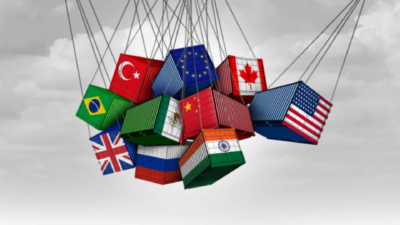How geopolitics underpins the Future Fund’s new investment order
The relative stability that prevailed from the end of the Cold War to the Global Financial Crisis has seen geopolitics become “underappreciated, underestimated and effectively forgotten about”, the Future Fund says in its latest position paper, titled “Geopolitics: the bedrock of the new investment order”.
But four trends – changing trade dynamics, rising strategic competition, growing populism and an increased risk of conflict – once again make geopolitics a “frictional influence” that can move markets through sudden extreme episodes or shape them over decades, and investors will have to adapt both their portfolios and the assumptions that underpin them accordingly.
“The way geopolitics weaves its way through to the macroeconomy, policy choices, and ultimately financial markets, is an important part of the investment process, as is assessing whether current market pricing adequately compensates for risks – geopolitical, or otherwise,” the paper says.
After all, complex supply chains are now seen as a vulnerability; trade tensions simmer in the background, while national security concerns are used as justification for banning everything from EVs to apps; politics has become more polarised, which could lead to “acute and/or chronic political instability”; and the prospect of a global conflict hangs over it all.
In search of true diversification
It’s those first three trends that are easiest to trade, the paper says. The Future Fund’s expectation that geopolitics will contribute to higher inflation, interest rates and volatility means that using government bonds to diversify equity risk is no longer viable, and it’s instead turning to “true diversifiers” like non-directional hedge fund strategies, including equity market-neutral or systematic macro. And while spreading investments across geographies has previously been one dish in the diversification ‘free lunch’, it’s no longer as appetising as it used to be.
“Certain jurisdictions may not be as open to free capital flows in the future, with the spectre of capital controls or sanctions under certain extreme scenarios,” the paper says. “As well, the rising share of some countries in emerging market equity and bond indices may lead some investors to reconsider the use of standard market-cap indices.”
Which doesn’t mean that the Future Fund’s brave new world is one bereft of opportunities. In the same way that the Cold War period saw vast leaps in rocket and computer science, it’s “entirely plausible” that more intense great power competition will lead to more government-driven research and technological breakthroughs in areas like green energy, quantum computing and artificial intelligence.
“Leaning into such exposures is another way investors can traverse the outcomes associated with these trends,” the paper says,
The Future Fund also has a preference to own domestic assets, inflation and the energy transition, and is building larger exposures to technology through private equity. To improve portfolio agility and flexibility it’s pursuing more dynamic asset allocation and better liquidity management.
But while it considers them in asset allocation and portfolio design, conflicts aren’t something the Future Fund is trying to trade. That’s because – despite the fact that they draw the most attention from investors – few conflicts have a long-term impact on global financial markets, while their “capricious nature” makes it tough to form a view on them. The Future Fund instead wants to build portfolios that are resilient against the outbreak of a conflict and which can “ideally thrive through the recovery”.
“An increase in geopolitical risk is one of the core reasons why holding a traditional 60:40 investment portfolio seems unlikely to be appropriate for investors going forward,” the paper says. “Our approach as a long-term investor is to focus on those geopolitical developments that are likely to occur over the horizon.
“Investors of all types would be wise to become well-versed on the dimensions and likely implications of the challenges that arise from geopolitics. The era of being able to ignore this inimitable force is over.”











